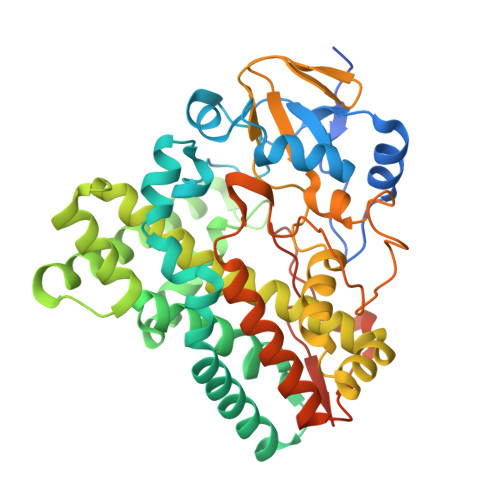Molecular basis for the P450-catalyzed C-N bond formation in indolactam biosynthesis.
He, F., Mori, T., Morita, I., Nakamura, H., Alblova, M., Hoshino, S., Awakawa, T., Abe, I.(2019) Nat Chem Biol 15: 1206-1213
- PubMed: 31636430
- DOI: https://doi.org/10.1038/s41589-019-0380-9
- Primary Citation of Related Structures:
6J82, 6J83, 6J84, 6J85, 6J86, 6J87, 6J88 - PubMed Abstract:
The catalytic versatility of cytochrome P450 monooxygenases is remarkable. Here, we present mechanistic and structural characterizations of TleB from Streptomyces blastmyceticus and its homolog HinD from Streptoalloteichus hindustanus, which catalyze unusual intramolecular C-N bond formation to generate indolactam V from the dipeptide N-methylvalyl-tryptophanol. In vitro analyses demonstrated that both P450s exhibit promiscuous substrate specificity, and modification of the N13-methyl group resulted in the formation of indole-fused 6/5/6 tricyclic products. Furthermore, X-ray crystal structures in complex with substrates and structure-based mutagenesis revealed the intimate structural details of the enzyme reactions. We propose that the generation of a diradical species is critical for the indolactam formation, and that the intramolecular C(sp 2 )-H amination is initiated by the abstraction of the N1 indole hydrogen. After indole radical repositioning and subsequent removal of the N13 hydrogen, the coupling of the properly-folded diradical leads to the formation of the C4-N13 bond of indolactam.
Organizational Affiliation:
Graduate School of Pharmaceutical Sciences, The University of Tokyo, Tokyo, Japan.















